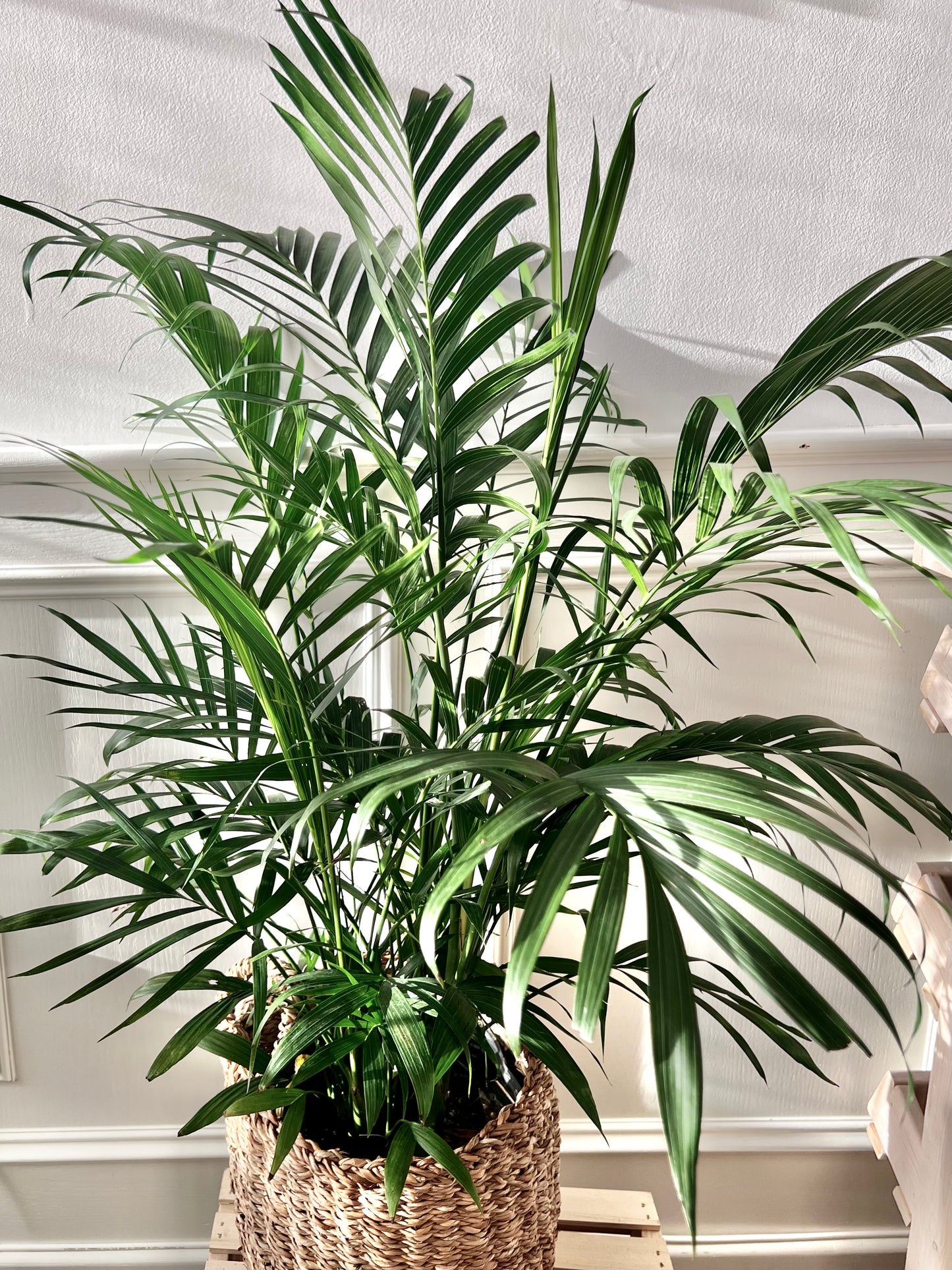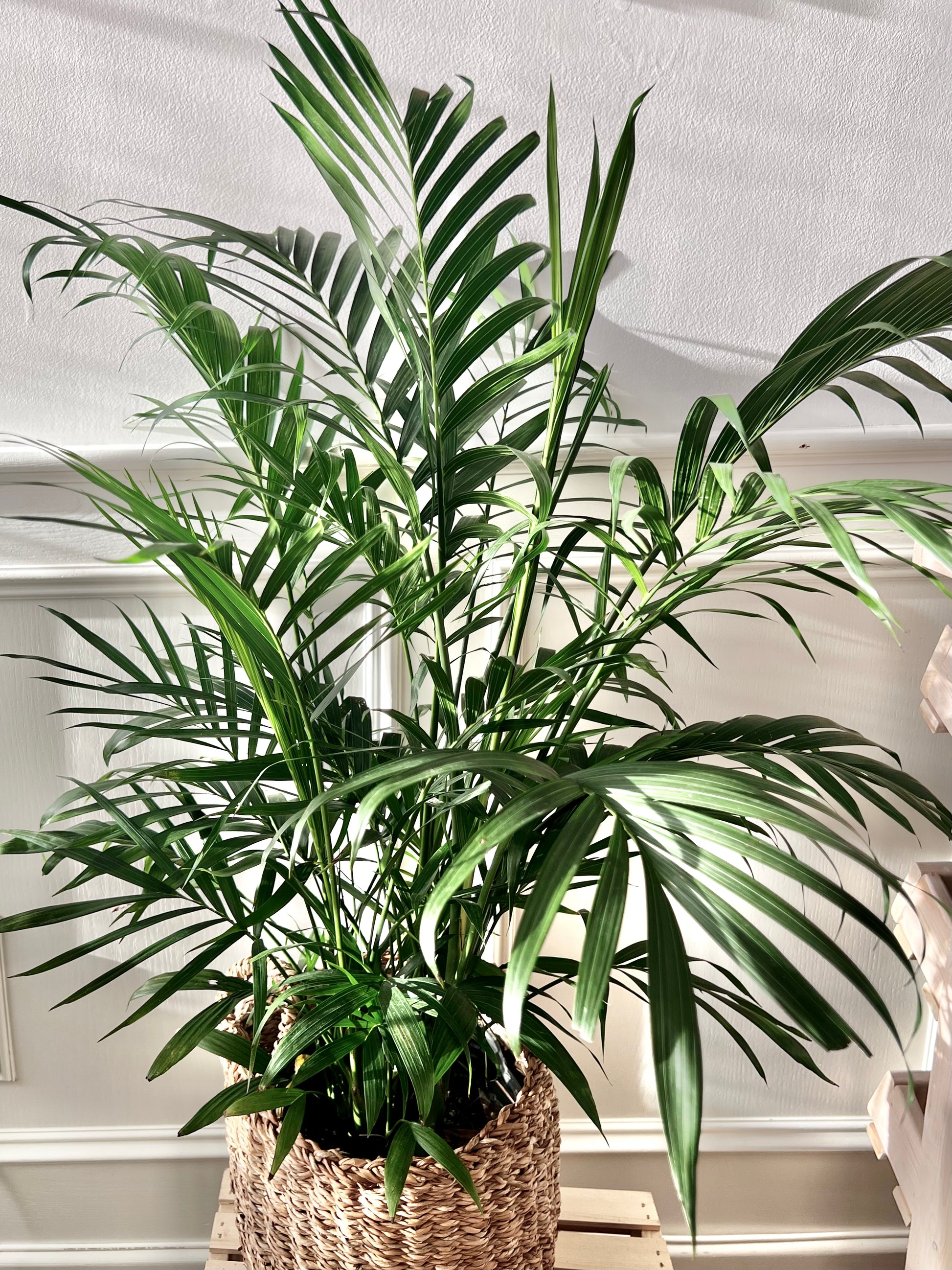Cat Palm
Cat Palm
Couldn't load pickup availability
Cat palms, scientifically known as Chamaedorea cataractarum or Neanthe bella palm, are small, elegant palm trees prized as indoor ornamental plants. Here's some information about cat palms:
Appearance: Cat palms are characterized by their slender, cane-like stems and delicate, arching fronds. The fronds are pinnate, meaning they have feather-like leaflets arranged along a central stem. The leaflets are typically dark green and glossy, giving the plant a lush and tropical appearance. Cat palms are relatively slow-growing and reach a maximum height of around 4 to 6 feet indoors, making them suitable for smaller spaces.
Native Habitat: Cat palms are native to the rainforests of Mexico and Guatemala, where they grow as understorey plants in shaded, humid environments. They are well-adapted to low light conditions and thrive in the filtered sunlight found beneath the canopy of larger trees.
Growing Conditions:
Light: Cat palms prefer bright, indirect light but can tolerate lower light conditions. Avoid placing them in direct sunlight, as this can scorch their leaves. Place the plant near a window where it can receive filtered sunlight or artificial grow lights.
Temperature: Maintain temperatures between 65°F to 80°F (18°C to 27°C) for optimal growth. Cat palms prefer warm and humid conditions and should be protected from drafts and temperature extremes.
Humidity: Cat palms thrive in high humidity environments. They benefit from regular misting or placing a humidifier nearby to maintain humidity levels. Dry air can cause the leaf tips to turn brown and crispy.
Watering: Keep the soil evenly moist but not waterlogged. Water the plant when the top inch of soil feels dry to the touch, allowing excess water to drain from the bottom of the pot. Avoid letting the soil dry out completely, as this can cause the leaves to wilt.
Soil: Plant cat palms in a well-draining, peat-based potting mix rich in organic matter. A mix of peat moss, perlite, and pine bark works well for providing good drainage while retaining moisture.
Fertilization: Feed cat palms with a balanced liquid fertilizer diluted to half strength every 4 to 6 weeks during the growing season (spring and summer). Reduce or stop fertilizing during the fall and winter months when growth slows down.
Maintenance: Remove any dead or yellowing leaves regularly to maintain the plant's appearance and promote healthy growth. Prune back leggy growth as needed to encourage bushier growth and remove any brown or damaged fronds.
Pet Friendly: Cat Palms are non-toxic to cats and dogs, making them safe to have in households with pets.
Cat palms are valued for their graceful appearance and ease of care, making them a popular choice for indoor spaces. With proper care and attention to their growing conditions, cat palms can thrive and add a touch of tropical elegance to your home or office.
Share


